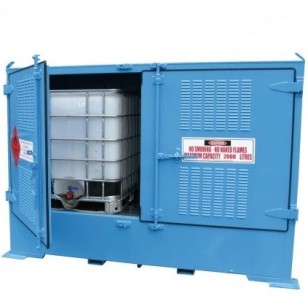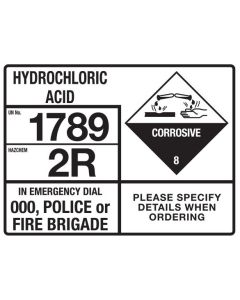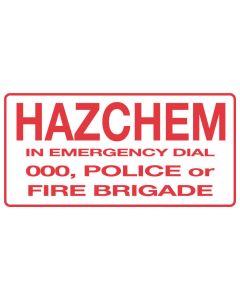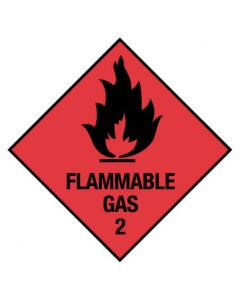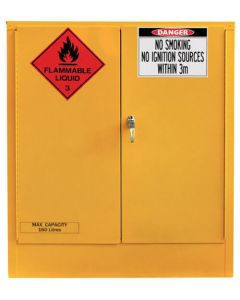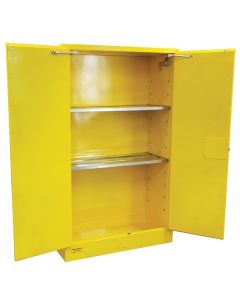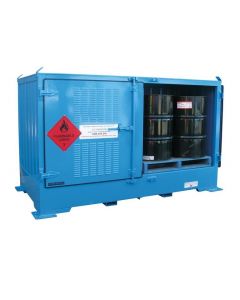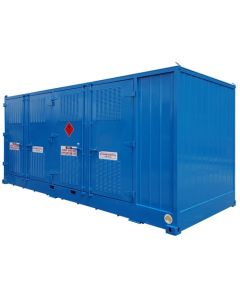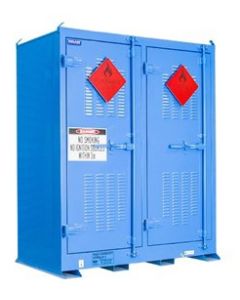The Ultimate Guide to Dangerous Goods Cabinets
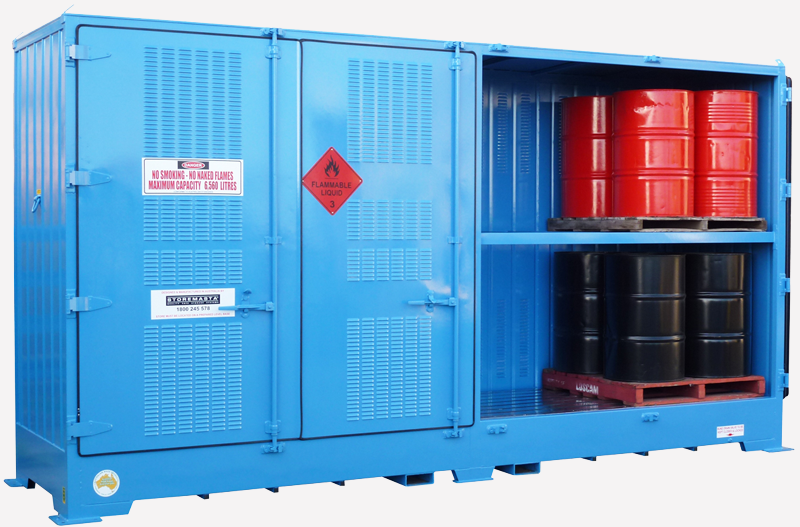
Guide to Dangerous Goods Cabinets
What are dangerous goods cabinets?
Dangerous goods cabinets work by containing this risk in a controlled way. Their steel casing ensures separation from other materials or from ignition sources, both of which can compound an explosion, react to leakage or produce other safety hazards.
Dangerous goods cabinets are suitable for the storage of flammable liquids, as well as Class 4 dangerous goods, oxidizing agents, organic peroxides, toxic or corrosive substances (when stored separately).
Dangerous goods cabinets are typically steel cupboards that are specifically designed to store these substances. If you are storing these types of liquids and materials at your site, it’s important to keep them in a designated cabinet to reduce the risk of damage and injury. For example, if a paint can was to explode it would cause a large spread of damage, become a projectile and potentially cause a fire.
This information is prepared as a guide only – always refer to your local regulations, specific workplace information and legal requirements for your industry.
SAFETY FIRST
Like any safety hazard on site, it’s important to undertake a risk assessment using the hierarchy of workplace hazard controls. This will ensure you have addressed the simpler and more effective ways of managing goods on site before resorting to the use of a dangerous goods or flammable cabinet.
Using this widely accepted method of addressing hazards may mean that you can engineer out a hazard so it is no longer a problem, or that you can apply different controls to make the hazard less of an issue. These can be as simple as using a different product such as a less volatile solvent or paint, or keeping smaller quantities on site which would affect the kind of storage you need.
Key risks to think about include the escape or spillage of goods, potential fires or explosions, chemical reactions or volatility, and nearby sources of ignition.
Check with your workplace health and safety representative for more information specific to your industry and the types of goods you keep on site. Additionally, always ensure you have an up to date emergency management plan in case of a worst case scenario.
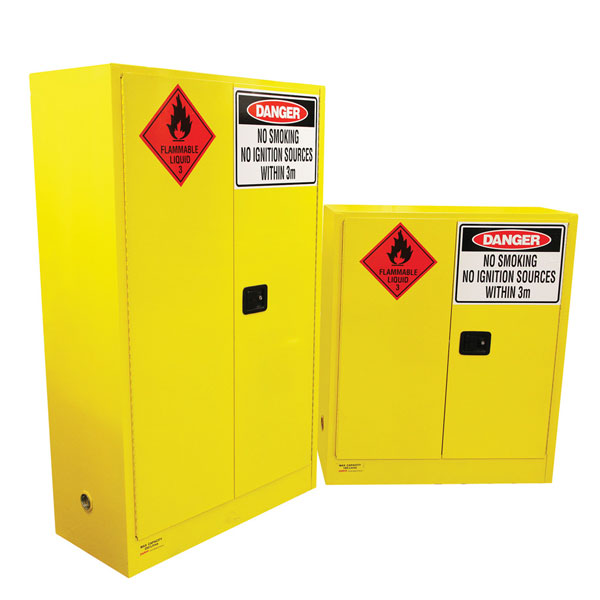 What are flammable storage cabinets?
What are flammable storage cabinets?
Australian Standard AS 1940 The Storage and Handling of Flammable and Combustible Liquids includes information on how flammable liquid storage cabinets should be constructed.
These types of cabinets differ slightly from dangerous goods cabinets, and are designed for storing substances such as paints, acetone, solvents, petrol, diesel, thinners, kerosene, turps, linseed oil and ethanol.
Storing small quantities vs large quantities
The Safe Work guidelines state that ‘small quantities’ of dangerous goods, as designated by Australian Standards and the ADG or Australian Dangerous Goods Code should be in a designated area, location or cabinet on your premises.
To work out what kind of cabinet you may need, prepare a list of all the dangerous goods on site that includes the product, its DG Class, Subsidiary Risk and Packing Group, and a summary of the hazards identified in the MSDS.
Reviewing the information in the MSDS will give you an indication of the fire and explosion risks relating to flammable gases, the fire risks from oxidising agents, as well as toxic or corrosive risks.
Having all this information to hand will also help you determine whether certain products are incompatible and should therefore not be stored together.
If you are able to minimise the quantities stored on site, substitute products for those with a lower risk category, and ensure you follow the MSDS closely regarding labelling and storage, this will go a long way to helping you manage the storage of your dangerous goods.
However, what if you need to store materials in bulk?
Bulk dangerous goods storage
Where there is a need to store large quantities of dangerous goods or flammable liquids at your workplace, different regulations apply. Small quantities are referred to as ‘packages’, whilst ‘bulk’ means any quantity that is over and above the maximum container size specified for a ‘package’.
Typically bulk storage refers to items such as tanks and IBCs, however, the Australian Dangerous Goods Code can offer specific max quantities for each substance.
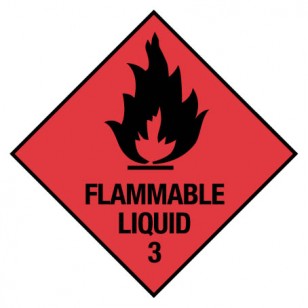 What are the Classes of Dangerous Goods?
What are the Classes of Dangerous Goods?
Substances defined under the ADG Code as dangerous goods of Class 2, 3, 4, 5, 6.1, 8 or 9 require specific types of storage and management.
These classes are:
- Class 2 Flammable Gases
- Class 3 Flammable Liquids
- Class 4 Flammable Solids
- Class 5 Oxidising Agents and Organic Peroxides
- Class 6 Toxic Substances
- Class 8 Corrosives
- Class 9 Miscellaneous Dangerous Goods
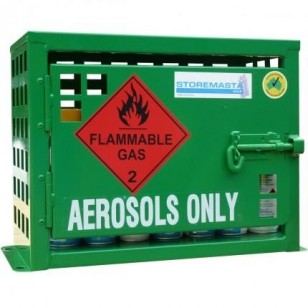 Are spray paints classified as dangerous goods?
Are spray paints classified as dangerous goods?
Where over 100 litres or over 50kg of aerosols or other types of small disposable cylinders are stored together, these should be kept in a dedicated aerosol storage cabinet. An enclosed storage area or cabinet with mesh panels will help to reduce the risk of paint cans becoming projectiles in the event of a fire.
Sometimes spray paints can be kept in a regular dangerous goods cabinet, however depending on the volume and the environment and a number of other factors, a traditional cabinet can be overkill. If you are only storing paint, an aerosol storage cabinet presents a good solution.
What makes an effective dangerous goods cabinet?
You can’t store your dangerous goods in any old cupboard: the cabinet needs to be designed to meet Australian Standards with shelving constructed of chemically resistant materials.
Shelves need to have a lip at the front of the shelf to help contain spills and a bund in the base that can fill freely in the event of a spill or leak. They are generally supplied with appropriate placards or signage and are brightly coloured for easy identification.
Plus, certain cabinets are designed for specific hazardous materials, for example, flammable or dangerous goods, so it’s important to match the product you’re storing to the appropriate cabinet.
How do I find out more information?
View our Dangerous and Flammable Storage Cabinets

Buy Dangerous Goods and Flammable Storage Cabinets
Jaybro supplies Standards Approved and fully compliant dangerous goods cabinets and flammable liquid cabinets in a wide range of sizes. Contact our friendly team for advice and assistance, or complete the quote form to receive a quick quote.
Disclaimer: This information is provided as an introductory guide only and does not constitute professional advice. Ensure you make your own independent enquiries before deciding if a particular product is right for you. Consult the regulations and standards applicable to your area and check with your workplace health and safety representative for further information. Jaybro does not warrant the accuracy, content, completeness or suitability of the information on this site (or any site owned by the Jaybro Group) for your individual purposes.
 Sign In
Sign In 

